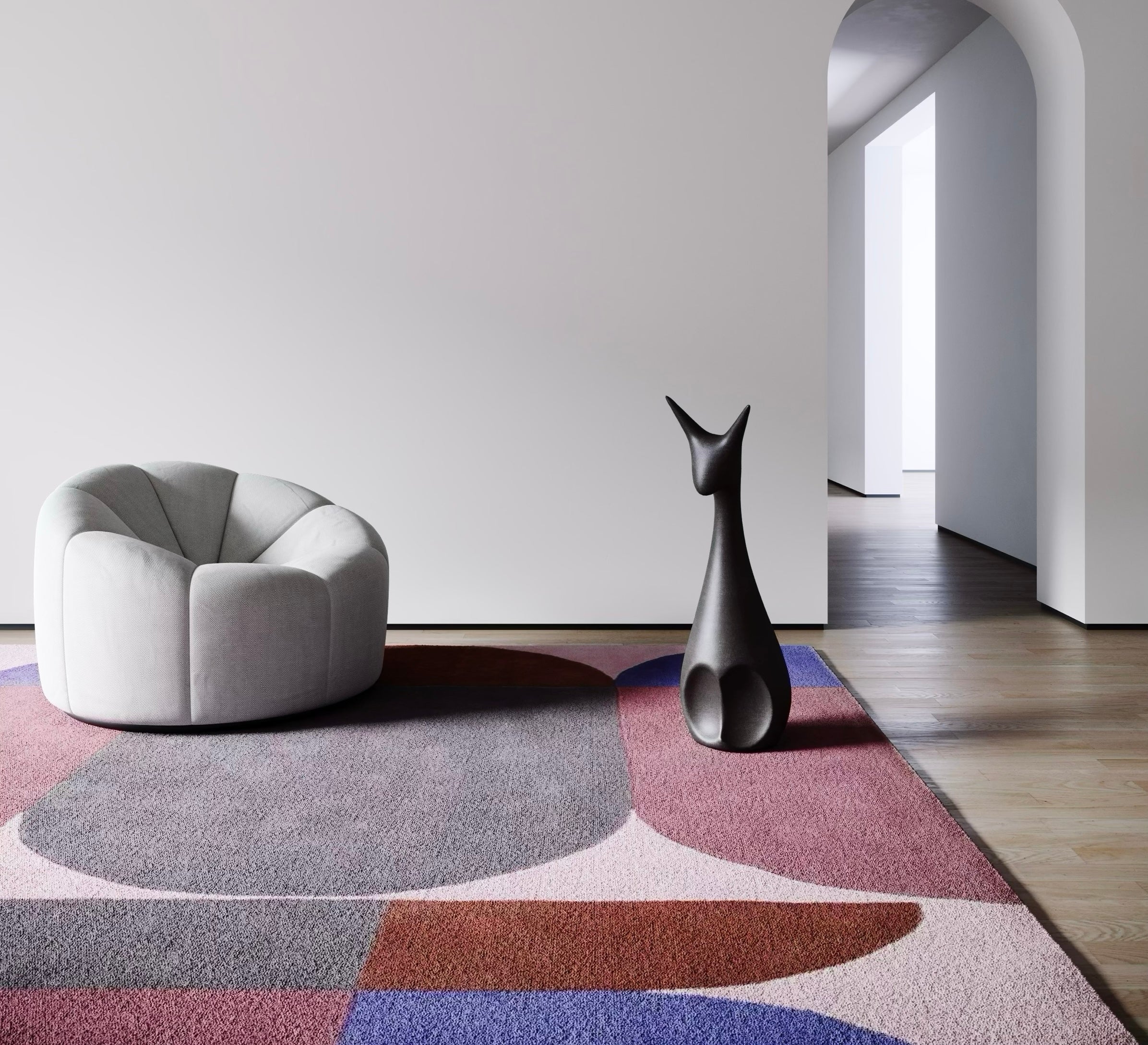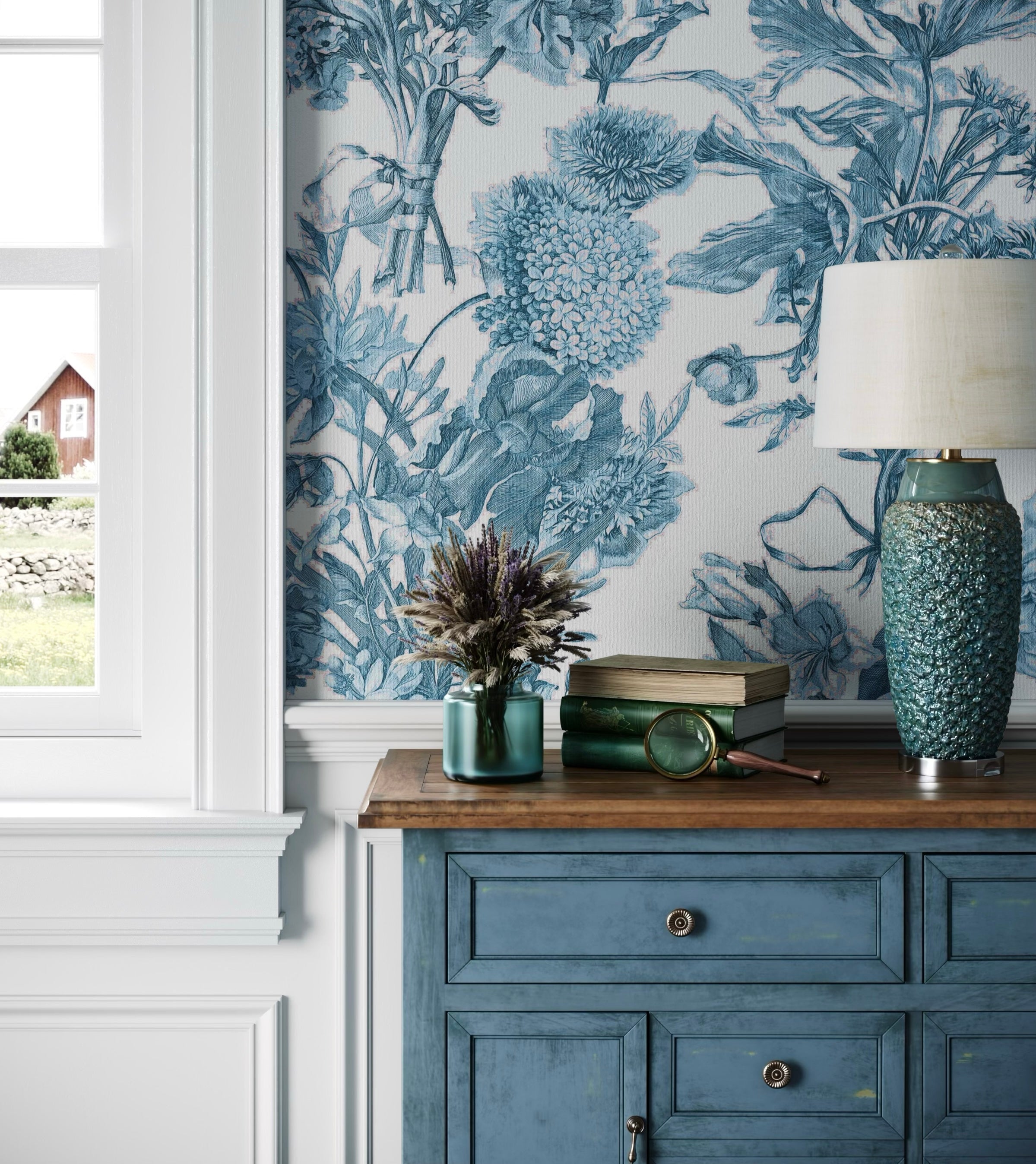Geometric forms interlock and radiate, their connecting logic creating optical movement across the surface. Selma channels late 1960s and early 1970s pattern vocabulary when psychedelic influence met geometric precision and colour inhibition dissolved.
The pattern employs interlocking motifs—possibly hexagons, diamonds, or stylized floral forms reduced to angular geometry—arranged so neighbouring elements share edges or vertices. Multiple colours saturate the composition: oranges, teals, purples, yellows typical of the period when synthetic dyes enabled unprecedented chromatic range. The connecting geometry creates visual puzzles: eye movement follows connections between forms, discovering rhythms and relationships through sustained observation. This optical quality references Op Art influence on commercial textiles during the era, where geometric pattern created perceptual effects beyond static decoration. Scale remains moderate, individual motifs readable yet dense enough to create overall texture.
Printed in Cornwall with precise colour registration maintaining the sharp boundaries essential to geometric optical patterns.
Selma suits interiors embracing retro revival or maximalist tendencies comfortable with chromatic intensity. Dining rooms, powder rooms, creative studios where bold pattern provides energetic focal drama. The period reference works alongside vintage or reproduction furniture from the 1960s-70s, or contemporary pieces appreciating that era's design fearlessness. Consider feature walls; full room application risks sensory overwhelm given the colour saturation and geometric complexity. Works best in well-lit spaces where colours read accurately.
**TECHNICAL SPECIFICATIONS:**
- Width: 75cm per roll
- Length: 7 metres
- Pattern alignment: Straight match
- Repeat: Complex geometric repeat
- Installation: Butt joint
**CARE:**
Wipe clean with damp cloth; the busy multicolour pattern conceals minor surface marks within its chromatic complexity.
**BRING THIS HOME**
Where geometry gains psychedelic colour, walls remember when patterns connected like visual puzzles demanding sustained gaze.







